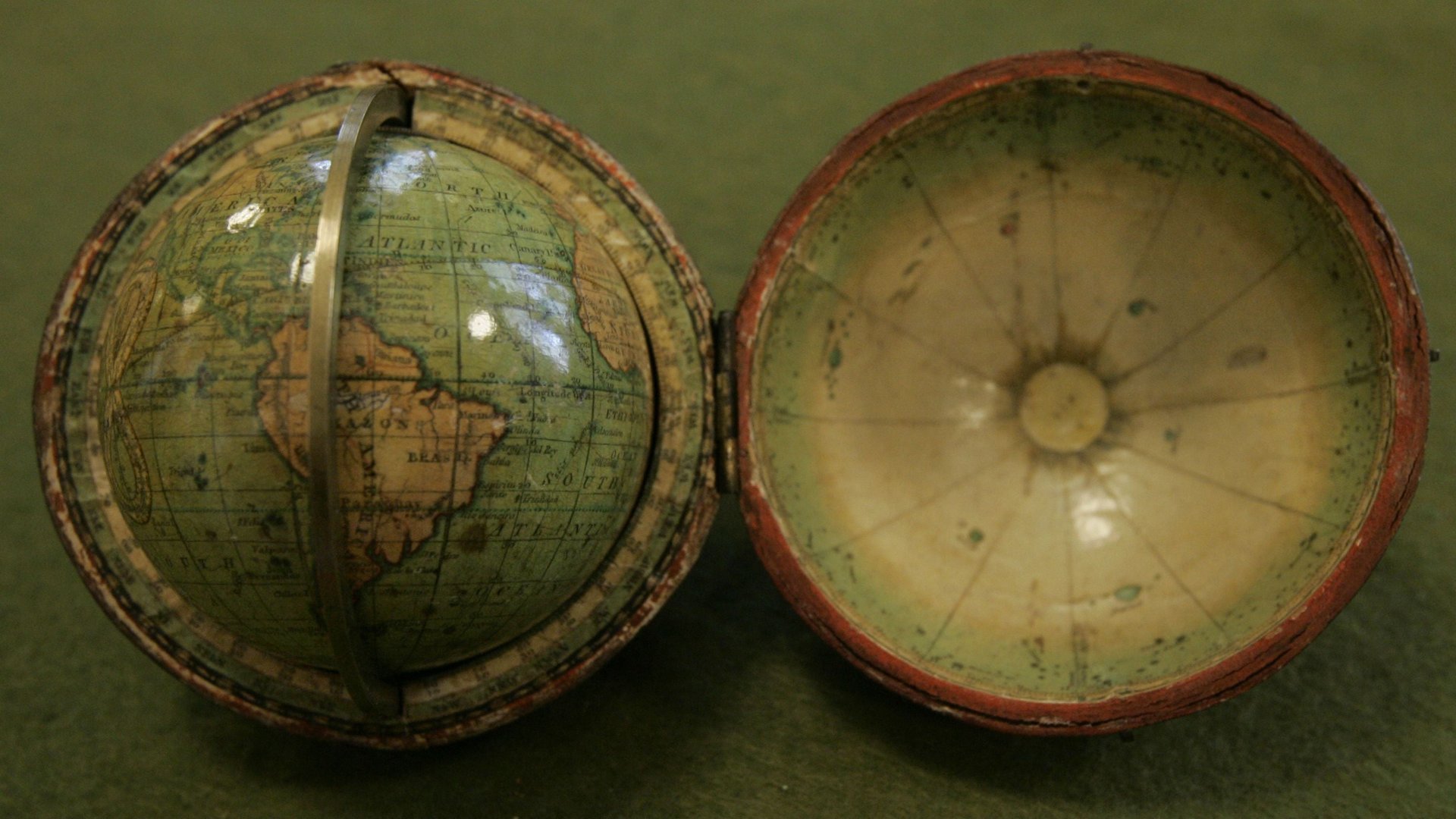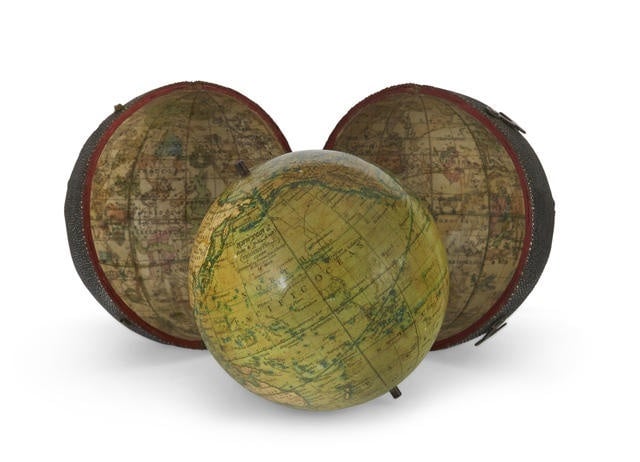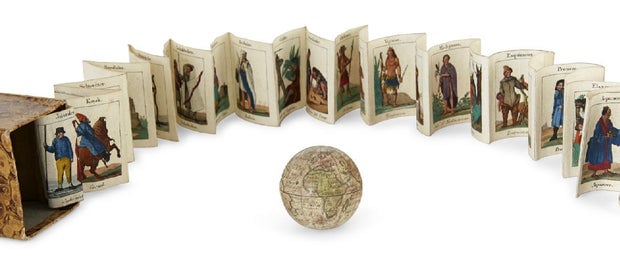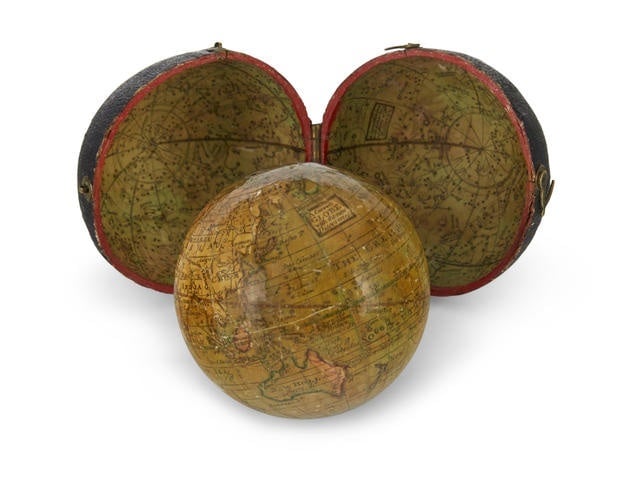These tiny glass globes were all the rage in London 200 years ago
Nearly 60% of Americans carry maps in our pockets in the form of smartphones. There are the functional guides—Google Maps, Apple Maps, Waze, Sigalert—and then there are the more playful maps, charting more beautiful routes, paths less traveled, and travelers’ stories.


Nearly 60% of Americans carry maps in our pockets in the form of smartphones. There are the functional guides—Google Maps, Apple Maps, Waze, Sigalert—and then there are the more playful maps, charting more beautiful routes, paths less traveled, and travelers’ stories.
Turns out, 19th-century Europeans had a similar appreciation for geographical whimsy. They, too, collected pocket-sized maps that de-emphasized utility—only theirs were itty-bitty globes.

Handmade and painted in London circa 1830, “Newton’s New and Improved Terrestrial Globe” (above) depicts the continents as they were known at the time in an impressively small three inches in diameter. It depicts celestialconstellations of “mythical beast[s] and scientific instruments,” according to Bonhams, which is auctioning off 30 of these little globes on Oct. 22, starting at $1,000 a pop.
This one’s even smaller at an inch and a half, and it comes with an accordion-style booklet showing “people from around the world”—with no small amount of Eurocentrism at play:

Here’s another three-incher, made of papier maché and plaster, and enclosed in a wood case:

“A Correct Globe with the New Discoveries” is, well, not quite correct—California is drawn as a peninsula. But the 1791 London-made is gorgeous nevertheless.
Besides, like our more whimsical mapping apps, these pocket globes—whose early-18th-century heyday petered out by the 1800s—weren’t likely used for truly practical purposes. Katie Taylor of Cambridge’s Whipple Museum of the History of Science writes:
[T]heir size makes accurate calculations impossible, and they tend to lack the rings and dials required for the most common manipulations. Additionally, makers continued to use pictorial constellation figures on pocket globes, even after the images fell out of use on larger globes as they were considered “unscientific.”
More likely, the globes were status symbols for upper-crust gentlemen, or even possibly semi-educational playthings for privileged children. Like STEAM for the wig-wearing set.
Still, if you’re looking for a history-nerd alternative to the iPhone 6, these babies have one great advantage: They won’t bend in your pocket—’cause they’re already spheres.
Peruse all of the globes to be offered by Bonhams here, part of a larger science-themed auction.